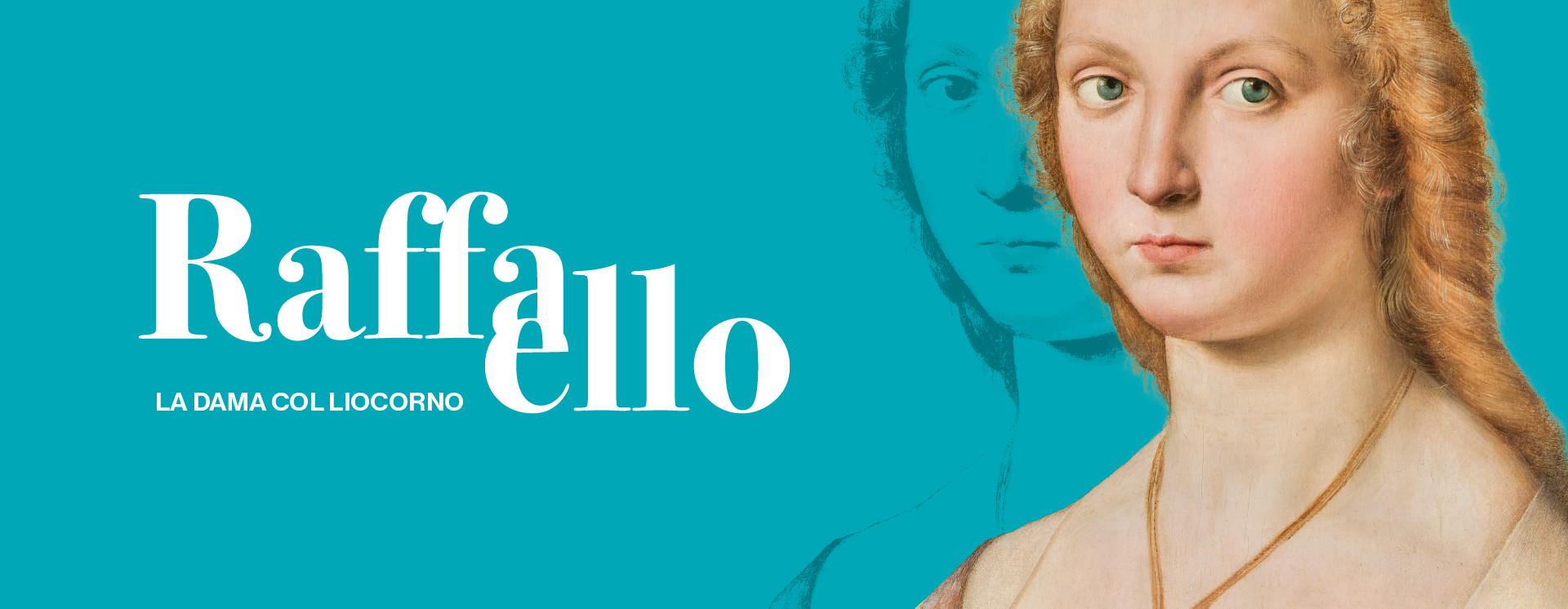"Raphael. Lady with Unicorn" exhibition in Naples
Gallerie d'Italia - Napoli
From 27 March to 22 June 2025
Full entrance 7€, reduced 4€, free for partners, schools, children under 18 and customers of the Intesa Sanpaolo Group
The Allemandi catalogue of the exhibition "Raphael. Lady with Unicorn" is available online, in the Gallerie d’Italia bookshops, and in major bookstores in your city.
As part of the programme "L'Ospite illustre" (The Illustrious Guest)
In the wake of the success and consensus of both the public and art insiders of the last edition of “L'Ospite illustre”, the programme of exchanges with major Italian and foreign museums launched in our museum venues in 2015, for the 2025 edition the Gallerie d'Italia in Naples will be hosting Raphael Sanzio's masterpiece, Lady with Unicorn, on loan from the Galleria Borghese in Rome.
The painting will be displayed in the room dedicated to Caravaggio's Martyrdom of St. Ursula, which will be shown at the same time at the Gallerie Nazionali di Arte Antica - Palazzo Barberini for the exhibition “Caravaggio 2025”.
The presence of Raphael's sublime painting will allow the public of the Galleries of Naples to enjoy another masterpiece of art of all times, in the absence of Merisi's last work.
Analysis of the "Lady with Unicorn"
The Lady with Unicorn was returned to Raphael by the art historian Roberto Longhi in 1927, when the unicorn was still covered by another painting that had transformed it into a Saint Catherine with the wheel and the palm of martyrdom. The work was restored soon afterwards, freeing it from these later interventions.
X-ray analyses of the work have shown that before the unicorn, symbolising chastity (or the taming of excesses or intemperance), Raphael had painted a little dog, symbolising fidelity. It is therefore plausible that this portrait was painted for a wedding. It has been suggested that the sitter is Maddalena Strozzi before her marriage in 1504 to Agnolo Doni, who was also a client of Michelangelo, and was portrayed with his wife by Raphael himself in two paintings that now hang in the Uffizi, but the young woman shown here has different coloured eyes and hair, and her identity continues to be unknown.
The Lady with Unicorn seems to share a similar foundation with the Mona Lisa, which Raphael is believed to have seen for the first time shortly after moving to Florence at the end of 1504.
However, several elements lead us to believe that he had travelled to the city for the first time in the second half of 1503, where he immediately came into direct contact with Leonardo da Vinci who, as certain evidence indicates, had already painted the head and perhaps the bust of the Mona Lisa by October of that year. Raphael must have seen the work then, as shown by some of his drawings, which are more immature than the portrait in the Borghese Gallery. The Lady with Unicorn, which can be dated to the beginning of the second period of residence in Florence, at the beginning of 1505, seems instead to be the result of a later comparison with the Mona Lisa, which must have reached a more advanced stage of elaboration by that point.
Watch the video dedicated to the opera "Lady with Unicorn"
Discover the masterpiece of Raphael Sanzio "Lady with Unicorn" on display at the Gallerie d'Italia in Naples.
video of Francesco Mazzei
